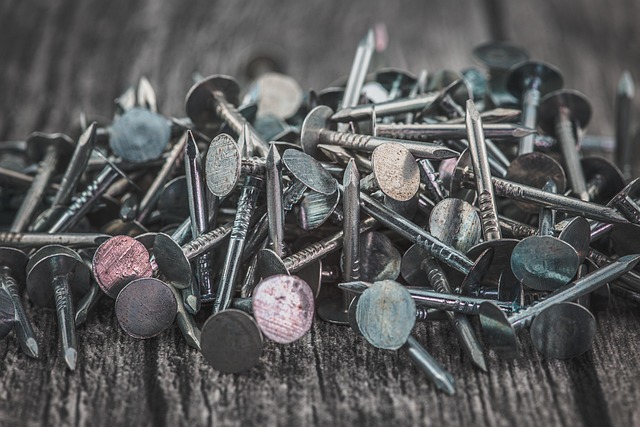Flat roof repairs require specialized expertise due to unique materials and environmental exposure, addressing common issues like leaks, blistering, and structural damage. Choosing durable, weather-resistant flat roofing materials such as EPDM or TPO ensures longevity and efficiency. Streamlined repair processes involve thorough inspections, pre-fabricated components, and proper installation techniques for long-lasting results. Inflatable roof repair using bitumen membrane requires meticulous preparation and maintenance checks to maximize the lifespan of flat roofs.
“Experience swift and efficient flat roof repair services with expert insights tailored to prolong your structure’s lifespan. This comprehensive guide delves into essential aspects, from deciphering common issues affecting flat roofs—like leaks, damage from weather conditions, and aging materials—to selecting durable flat roofing materials for optimal performance.
We simplify the repair process with practical tips, ensuring quick turnaround times. Discover best practices shared by industry experts to achieve long-lasting results, enhancing your property’s protection and value through strategic use of high-quality flat roofing materials.”
- Understanding Flat Roof Repairs: Common Issues and Their Impact
- Choosing the Right Flat Rooting Materials for Durability and Efficiency
- Streamlining the Repair Process: Quick Tips for Efficient Service Delivery
- Expert Insights: Best Practices for Long-Lasting Flat Roof Repairs
Understanding Flat Roof Repairs: Common Issues and Their Impact
Flat roof repairs are a specialized service, often required due to the unique nature of flat roofing materials and their exposure to various environmental factors. Common issues include leaks, caused by damaged or missing shingles, flashing problems, or cracks in the membrane. These can lead to significant water intrusion and structural damage over time. Another frequent problem is blistering or buckling of the roof surface, resulting from thermal expansion and contraction, or poor installation.
The impact of these issues is far-reaching; not only do they cause costly damage to the building’s interior but also pose safety hazards. Water damage can compromise the structural integrity of the building, while visible defects can indicate deeper problems, affecting the overall value and appeal of the property. Prompt attention to these issues is crucial, as early repair can prevent more extensive and expensive replacements of flat roofing materials in the future.
Choosing the Right Flat Rooting Materials for Durability and Efficiency
When it comes to repairing a flat roof, selecting the appropriate flat roofing materials is half the battle won. The right materials can ensure longevity, maintain efficiency, and prevent future damage. Key factors to consider are weather resistance, durability, and compatibility with existing infrastructure. For instance, choosing high-quality, impact-resistant underlayments and membranes that are designed to withstand extreme temperatures and heavy loads will significantly contribute to the roof’s overall strength and protection against leaks.
Moreover, modern flat roofing materials offer advanced features like improved insulation properties, fire resistance, and reduced environmental impact, making them a smart investment. These innovative options not only enhance the structural integrity of the roof but also provide energy efficiency benefits, which can lead to long-term cost savings for homeowners.
Streamlining the Repair Process: Quick Tips for Efficient Service Delivery
Streamlining the repair process is key to ensuring efficient service delivery for any flat roof repair company. To achieve this, it’s essential to have a systematic approach starting with a thorough inspection using high-quality diagnostic tools. This step allows technicians to quickly identify the exact damage and its extent, targeting specific areas for repair.
Using suitable flat roofing materials is another critical factor in efficient service. Opting for durable, weather-resistant materials like EPDM or TPO ensures longer-lasting repairs that can withstand environmental conditions. Pre-cut and pre-fabricated components also significantly reduce installation time on site, allowing for quicker turnaround and less disruption to clients’ properties.
Expert Insights: Best Practices for Long-Lasting Flat Roof Repairs
When it comes to flat roof repairs, professionals emphasize the importance of using high-quality flat roofing materials for lasting results. The choice of material plays a significant role in ensuring the repair stands the test of time and withstands various environmental factors. One popular and reliable option is bitumen membrane, known for its flexibility, durability, and water resistance. This material can effectively seal leaks and prevent future damage.
Best practices also dictate precise installation techniques. Proper preparation of the roof deck, including ensuring it’s clean, dry, and free from debris, is crucial. Sealing all edges and seams and using compatible adhesives or fasteners ensures a strong bond between the new material and the existing structure. Regular maintenance checks are recommended to catch potential issues early, allowing for timely repairs that extend the lifespan of the flat roof.
In summary, efficient flat roof repair services rely on understanding common issues, selecting robust flat roofing materials, adopting streamlined repair processes, and implementing expert best practices. By combining these strategies, you can ensure long-lasting solutions, minimizing disruptions and maximizing the lifespan of your flat roof. Remember that choosing the right flat roofing materials is key to durability and cost-effectiveness in the long run.
